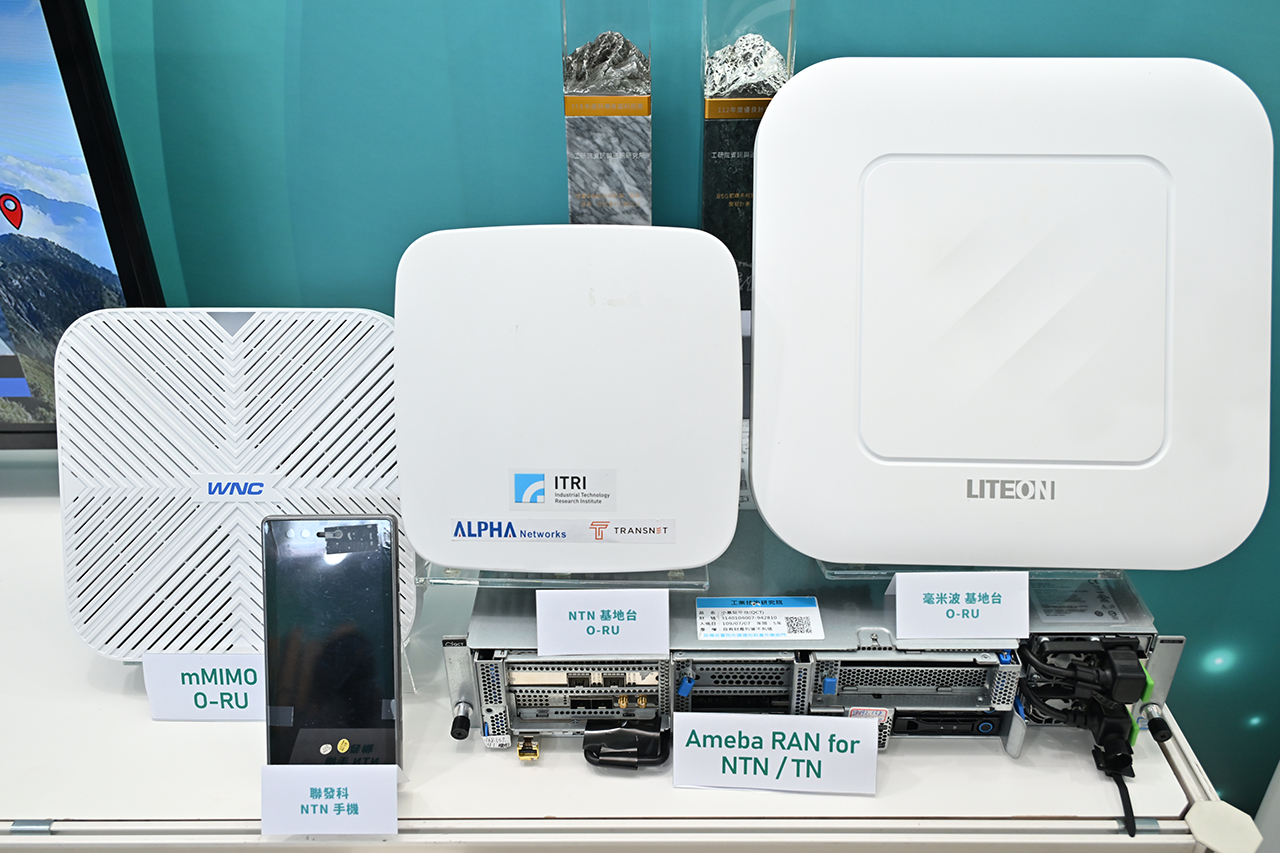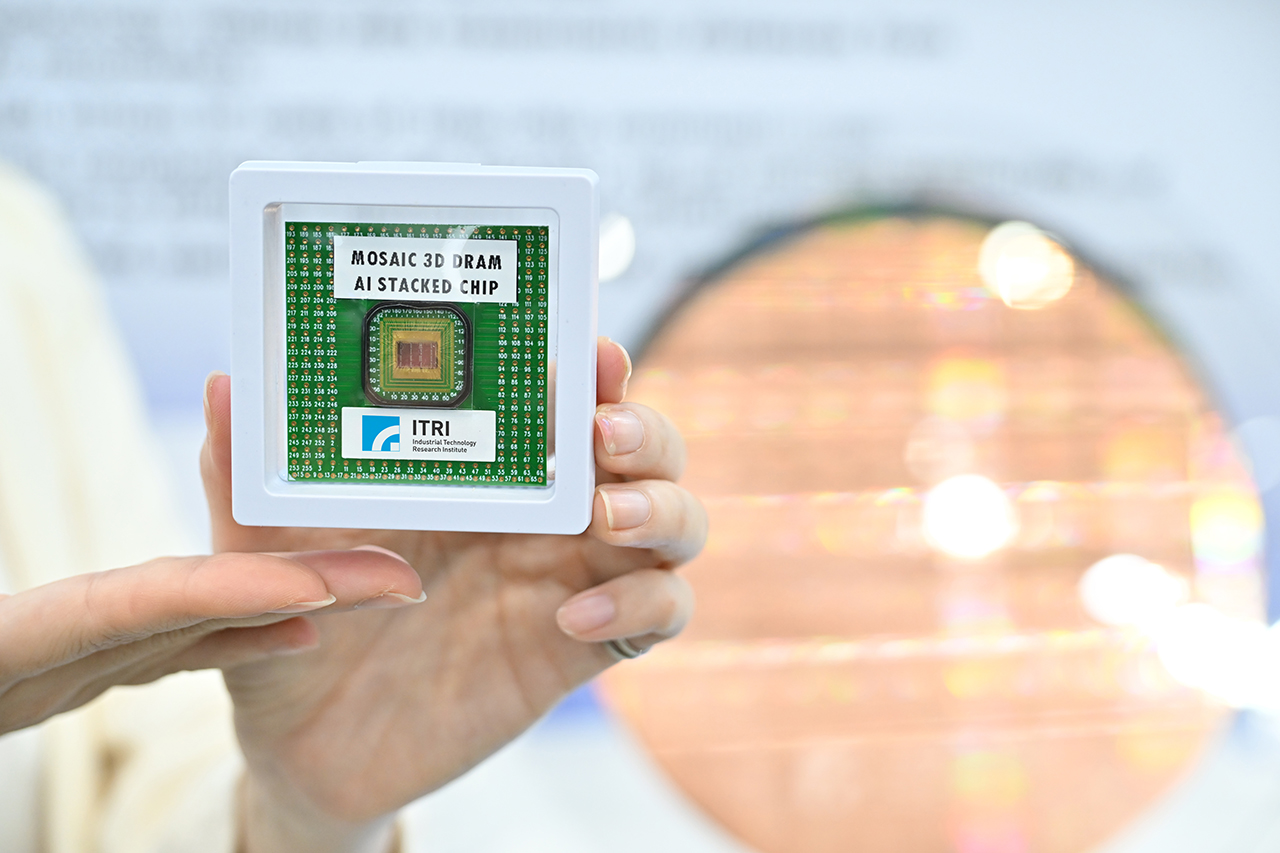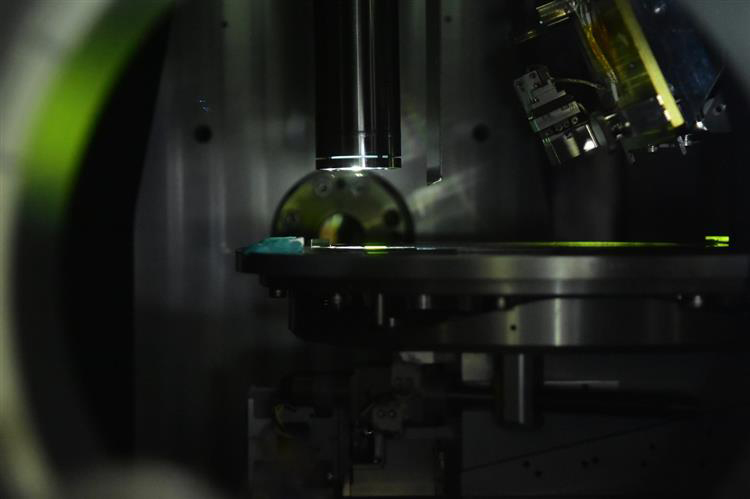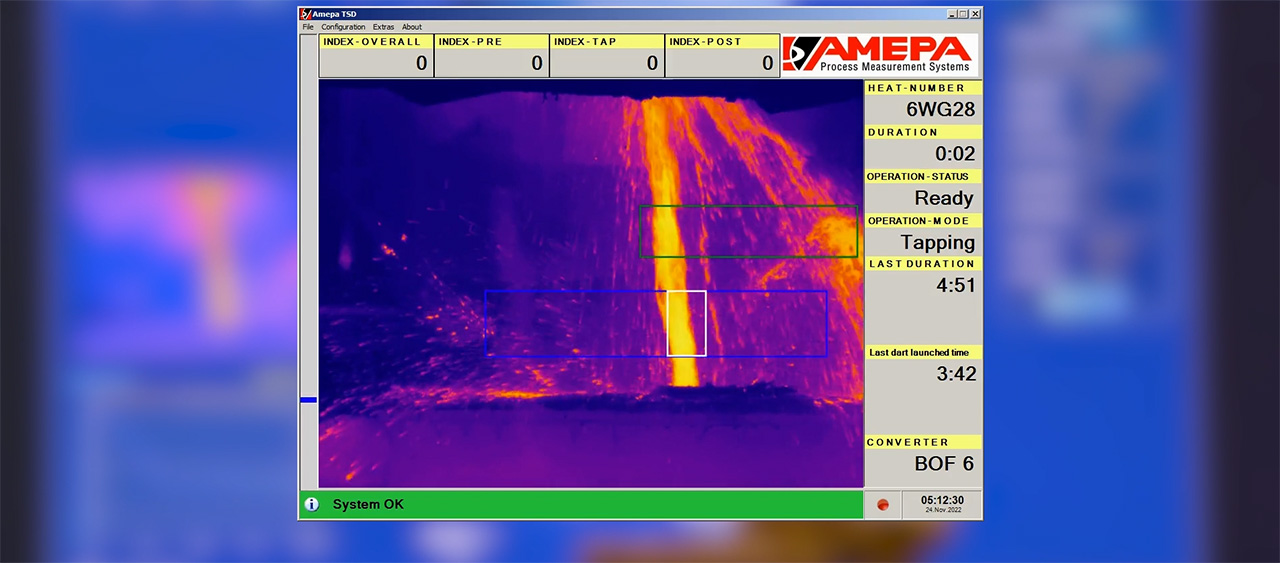Feature
Technology Breakthroughs in Communications, Semiconductors, and Process Optimization
To help industries enhance efficiency and performance, ITRI has been exploring innovative technological solutions in communications, semiconductors, and process optimization. These advancements include Ameba RAN for NTN/TN Convergence Network, Memory-cube Operability in a Stacked AI Chip for Generative AI (MOSAIC), In-Line X-Ray Critical Dimension Metrology System (XRCD), and Digital Twin System for Tapping Process (DiTwS-TP).
Ameba RAN for NTN/TN Convergence Network
Ameba RAN is a software-defined cellular base station that uses commodity hardware and configurable software to support various base station types. This technology eliminates the need for frequent hardware upgrades. It stands out by achieving direct-to-cell satellite communications and seamlessly transitioning users between terrestrial and non-terrestrial networks (TN/NTN) without the need for new phone chips or base station hardware. Adhering to open RAN principles, Ameba RAN offers flexibility, scalability, and cost efficiency. It supports advanced functionalities like VoIP NTN, broadband NTN, low-latency TN, and mmWave AR/VR TN. This solution meets the growing demand for seamless communication across diverse environments and caters to hybrid TN/NTN use cases including smart cities, factories, airplanes, and maritime applications.

Base station products of Ameba RAN for NTN/TN Convergence Network.
Memory-cube Operability in a Stacked AI Chip for Generative AI (MOSAIC)
The MOSAIC technology addresses the cost and scalability challenges associated with AI/GAI chips. It integrates logic and memory, reducing transmission distances between chips from micrometers to nanometers, cutting heat generation by 90%, and lowering costs by 80%. MOSAIC’s scalable modular design supports various AI applications, from portable devices to high performance computing (HPC) servers. By employing flexible and more efficient wafer manufacturing solutions, AI systems can achieve enhanced performance and deployment capabilities while concurrently lowering energy consumption. Developed with leading chipmaker PSMC, the prototype of MOSAIC uses 12-inch wafers fabricated with 40 nm logic and 25 nm DRAM processes, enabling simultaneous data transfer between logic circuits and memory.

The MOSAIC design reduces power consumption by 90% and boosts data speed eightfold by shortening the transmission distance between chips.
In-Line X-Ray Critical Dimension Metrology System (XRCD)
Current optical measurement methods face limitations due to shrinking transistor sizes, a shift from 2D to 3D structures, and the adoption of metal materials in advanced chip production. Consequently, critical dimensions cannot be accurately measured, directly impacting yield and leading to poor outcomes. ITRI and NanoSeeX have developed XRCD, the first of its kind that uses X-rays to measure critical dimensions in semiconductor manufacturing. The system balances measurement area (< 50 μm x 50 μm) and penetration depth (> 1 μm) by combining a highly efficient focusing optical module with a specific soft X-ray wavelength. NanoSeeX’s signal analysis, which integrates multi-signal and AI-driven machine learning, provides precise 3D measurements with < 0.1 nm accuracy. It improves yield and overcomes measurement challenges in complex microstructures.

XRCD, a reflective X-ray measurement machine, precisely monitors critical dimensions in semiconductors and improves process yield.
Digital Twin System for Tapping Process (DiTwS-TP)
The tapping process of Basic Oxygen Furnace (BoF) in the steel industry has numerous bottlenecks and obstacles, including energy use, carbon emissions, constant equipment or technology updates, and labor-intensive processes. ITRI and the China Steel Corporation (CSC) have jointly developed DiTwS-TP to digitalize steelmaking processes and minimize labor demands. This innovative system employs six intelligence-driven models and integrates AI with physics-based simulations to optimize strategies for steel tapping. By accurately predicting liquid steel behavior, DiTwS-TP ensures precise control, reduces operational costs, and significantly improves quality. The combination of virtual modeling and real-time simulations makes steel production safer and more efficient than ever.

DiTwS-TP digitalizes the steel tapping process to increase production safety and efficiency.